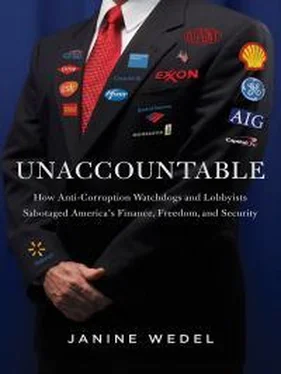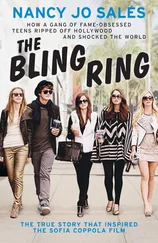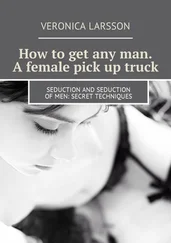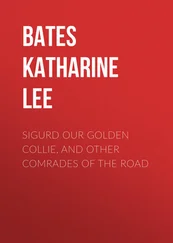In this blurred space, Soros entities are marked by flexible identities, fuzzy boundaries, and insider-ism. Soros, seen by some critics as “far too pragmatic to care about details,” as observer Călin Dan put it, has consistently relied on an inner circle of trusted advisers to identify key individuals in each country. 73And these individuals, supplied by Soros with money, office space, and practical help, have been afforded “considerable autonomy” to set up shop in their countries, as Stubbs writes. He notes that, 74
in an essay on the role of the Foundation in Croatia, Slavica Singer, a founding Board Member, is quoted as suggesting Soros introduced a “jazz-structure” mode of function, based on considerable local improvisation, allowing the Foundation to escape from bureaucratization and work effectively in a rapidly changing environment.
Soros’s overarching goal was to bolster the creation of a new policy elite opposed to both communism and nationalism. His distrust of bureaucracy and formal procedures, and his endorsement of risk-taking, have meant that innovative and experimental programs could be quickly implemented. “Nothing is settled in his environment,” says Dan, such that “his change of initiatives can be seen as part of a general strategy which uses chaotic motion in order to reach creative solutions.” 75
This MO, employed in an environment of those already practiced in bureaucratic workarounds, has spawned perhaps the ultimate informality. Sociologist Kim Lane Scheppele, who, like Stone, worked for a Hungarian Soros-sponsored university, observes that “Things change suddenly, without warning, and everyone simply has to adjust.” 76
It is no secret that Soros institutes and foundations in a given country are almost always associated with a particular elite network that has its fingers in many pies (politics, business, intellectual pursuits, philanthropy)—a network usually well known locally and for which people might even have a nickname. And it is no secret, as Stubbs puts it, that the influence of the network is “compounded by the ample resources available to foundations, compared, for example, to public universities and even some governments.” “In some countries,” he writes, 77
such as Serbia under Milošević, the Open Society Institute elite was, in many respects, a state elite in waiting. In other countries, certain charismatic individuals used their Soros role to enact a kind of anti-political politics.
Such network-based, and often exclusive, operations have faced criticism, even as some of their projects succeed in genuine outreach. Stubbs assesses, for instance, that while purporting to promote democracy and progressive causes and while trumpeting expertise and professionalism, the network is, “above all, highly elitist” and often appears “to favor people whose connections outstrip their qualifications.” 78Scheppele adds: “The network operates in a more imperial fashion, without democratic processes or the security of expectations that the rule of law brings for those who actually work there.” 79
What do these informal, ad-hoc operations of chosen elites produce? Stubbs describes 80
. . . a generation of emerging flexians working in and expanding fluid, and unaccountable, spaces of power. Despite these flexians’ roles in advocating for democracy, human rights and civil society in transitional settings, . . . the forms in which these advocacy initiatives are expressed may serve to erode the very developments they purport to promote. Above all, their emphasis on informal relationships, interpersonal connections, and network power reinforces and reproduces, albeit in a completely different context, a communist legacy in which “who” one knows is more important than “what” one knows. The players created by these cash-flush operations could hardly be more relevant when it comes to influencing and even governing.
Some of these elite players form think tanks and some of these organizations appear to operate not so very differently from new-style think tanks elsewhere. As Stubbs told me: 81
The very idea that there was something else—a fourth form (not state, government, or civil society but think tanks)—was introduced into the region by Soros in the late 1990s/early 2000s. This coincided with the need to go beyond the big picture, the grand narrative of social change, and Soros’s turn to the nuts and bolts of policy. This move gave the Soros elite another “in”—and means of having an impact in unaccountable ways.
Stubbs, who has observed the think-tank scene up close in Croatia, cites the case of the Croatia Legal Centre. “Its Soros elite worked very closely with the government,” he says, “but was not directly part of it. Policy creation was outsourced, blurring the boundaries between where government begins and ends.” 82
In short, the Soros network has helped forge new spaces of governing where informality and the primacy of the network trump democratic process. And even when good works are done and we support the people or particular policies pursued, the fact is that there’s little room in such spaces for accountability to the public.
Next, we’ll look at another model of influencing with think tanks as the focal point: networks of entities set up by like-minded, ideologically driven networks of players. These think tanks focus on issues ranging from climate change to spreading free-market ideology.
LAUNDERING INFLUENCE FOR A CAUSE
Climate-change deniers have brought organizing around their agenda to a high art. A report by the environmental activist organization Greenpeace describes a “secret plan” forged in 1998: 83
[A] small group sat down together at the American Petroleum Institute . . . to draw up a communications plan to challenge climate science. The group included representatives from Exxon, Chevron, [coal burner] Southern Company . . . and people from a number of the front groups and conservative think tanks that are still campaigning against climate science today, including the George C. Marshall Institute, Frontiers of Freedom, The Advancement of Sound Science Coalition and the Committee for a Constructive Tomorrow. . . . The plan they drew up proposed: “a national media relations program to inform the media about uncertainties in climate science; to generate national, regional and local media on the scientific uncertainties and thereby educate and inform the public, stimulating them to raise questions with policymakers.”
Since then, scholars and reporters have been trying to understand these organizations and their sponsors. It isn’t easy. What we do know is that the “Merchants of Doubt”—so-called contrarian scientists and their allies, as historians of science Naomi Oreskes and Erik Conway call them (also the title of their 2010 book)—have built “informal networks of action and influence, based heavily on personal contacts” and driven by ideology. These influencers exert their power across a wide range of life-and-death debates over science and public-health policy, everything from tobacco and acid rain to the ozone hole, DDT, and, especially important in recent years, global warming. “Contrarian” scientists Frederick Seitz, William Nierenberg, and Robert Jastrow co-founded the George C. Marshall Institute, which the watchdog group Source Watch describes as a “non-profit” powered by oil and gas money. This “think tank” coordinates with more established ones that share their views to undermine research findings that they see as overly alarmist. Of course, they promote not only their own ideological bias but also the interests of their energy-industry patrons. 84
The climate-denialist movement is a vast one, but we will confine ourselves here to think-tank involvement. Media Matters, a nonprofit information and research center, has a useful compilation of their activities: 85
Читать дальше












